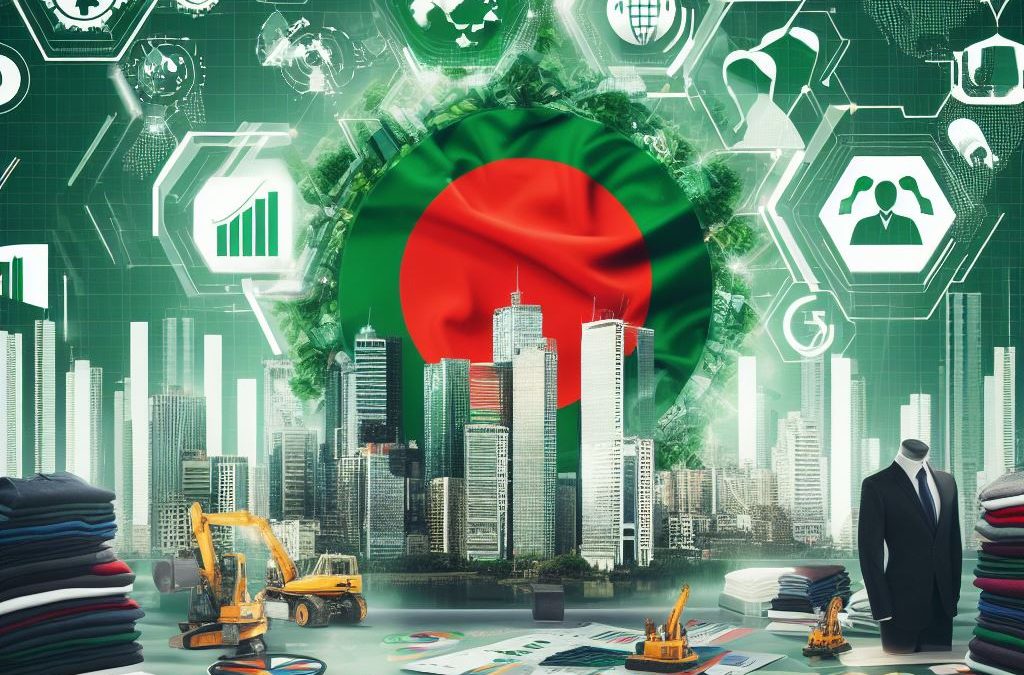Bangladesh’s clothing industry is a cornerstone of its economy, demonstrating formidable competitiveness in the global market. As the 2nd largest apparel manufacturer and exporter in the world, it is a significant player in the industry. This sector employed approximately 5 million people as of 2018-2019 and contributed to 84.21% of the total export of Bangladesh. This article delves into these strengths and explores how they shape the industry’s position on the world stage.
Part I: Understanding the Foundations of Success
The Role of Labor
Bangladesh’s clothing industry benefits from a large and skilled labor force that works at relatively low costs, providing a significant competitive edge. Over four million people are employed in the garment sector, and around twelve million people rely on it for their livelihood. This workforce enables the country to handle large orders, meet tight deadlines, and produce a variety of products, all critical factors in the fast-paced global fashion industry.
However, low wages and poor working conditions have been ongoing issues. As of the latest reports, the minimum wage for workers in Bangladesh is set at 8,000 taka per month, which is equivalent to roughly £71. Recent years have seen increased efforts to address these challenges with enhanced labor laws, unionization rights, and factory safety improvements.
Governmental Support
The Government of Bangladesh has been instrumental in nurturing the clothing industry. With policies that promote exports and incentives that encourage foreign investment, the government has provided a favorable business environment. The establishment of Export Processing Zones (EPZs) has further bolstered the industry by offering infrastructure facilities, tax benefits, and regulatory assistance to clothing manufacturers. Such support has encouraged several joint venture apparel manufacturing industries to set up operations in Bangladesh since the 1980s.
Geographical Advantage
Geographically, Bangladesh enjoys proximity to key markets and raw material sources, which reduces transportation costs and lead times. However, the country’s low-lying topography makes it vulnerable to climate change and natural disasters. Addressing these challenges is an ongoing process involving both protective and adaptive strategies.
Part II: Sustaining Competitiveness in a Changing World
Environmental Considerations
The environmental footprint of the clothing industry has been a major concern, given the high water consumption, energy use, and pollution levels involved in production processes. The textile sector is the second-largest contributor to industrial waste in the Dhaka watershed. Factories are adopting cleaner production methods, investing in wastewater treatment plants, and optimizing their energy use. By reducing its environmental footprint, Bangladesh’s clothing industry can meet the growing global demand for sustainable fashion.
Embracing Technology
Technology adoption is transforming Bangladesh’s clothing industry. The increasing use of automated machines, computer-aided design (CAD) systems, and digital printing technology is enhancing efficiency, reducing costs, and improving product quality. Simultaneously, digital technologies are streamlining supply chain management and enabling better customer relationships. Despite challenges such as high investment costs and a lack of skilled operators, the push for technological advancement is likely to persist.
Navigating Trade Relationships
Trade agreements play a substantial role in Bangladesh’s clothing industry competitiveness. As a member of the World Trade Organization (WTO), Bangladesh enjoys the benefits of Most-Favoured-Nation (MFN) treatment. Moreover, its status as a Least Developed Country (LDC) allows it duty-free access to many developed markets, including EU countries, under the Everything But Arms (EBA) initiative. However, changes in global trade policies or failure to meet certain labor and environmental standards can introduce risks.
Part III: Looking Ahead: Challenges and Opportunities
Future Outlook
The future of Bangladesh’s clothing industry looks promising, thanks to its competitive advantages. Nevertheless, challenges such as rising labor costs, stringent compliance requirements, and potential job losses due to automation loom large. Yet, these challenges present opportunities for the industry to prioritize sustainability, improve labor conditions, and embrace technology, ensuring its competitiveness in the evolving global market.
The industry is playing a pivotal role in enabling Bangladesh to leave the least developed country (LDC) category by 2024. According to data from Bangladesh apparel manufacturers, RMG is the main sector in Bangladesh where one can get back his investment within 3 to 5 years. This suggests the industry’s potential for continued growth and competitiveness.
Supply Chain Management
Efficient supply chain management is crucial for the industry’s competitiveness. The industry’s large scale of operations allows for economies of scale, reducing costs and enhancing efficiency. Technological advancements, such as ERP systems and data analytics, are improving supply chain planning and coordination. However, logistical bottlenecks, infrastructure limitations, and social and environmental issues need to be effectively managed for the industry to maintain its competitive edge.
In conclusion, Bangladesh’s clothing industry has carved out a significant niche for itself in the global market, powered by a number of distinct advantages. It faces a host of challenges that call for strategic actions to ensure its continued success. Through a combination of policy initiatives, technological innovation, environmental stewardship, and labor rights improvements, the industry can fortify its competitiveness and continue its trajectory of growth and prosperity.
The strengths and challenges discussed underscore the importance of partnering with a Bangladeshi apparel manufacturer that takes quality control, affordability, on-time delivery, and fair treatment of the environment and workers’ health and safety seriously, like Brandex Sourcing.
For more insight into the benefits of sourcing from this dynamic sector, we recommend reading our main article: Why You Should Source from Bangladesh’s Apparel Industry.
We invite you to explore these benefits first-hand. Reach out to us at Brandex Sourcing for a quote today and discover how we can help you leverage the strengths of sourcing from Bangladesh’s thriving apparel industry. Our commitment to quality, affordability, and ethical practices can provide you with a competitive edge in your industry. Click here to get a quote and start your journey with us.
Sources:
https://texeducation.wordpress.com/2013/12/26/pros-and-cons-of-garment-industry-future-prospects-and-challenges-of-bangladesh-garment-business/
https://intrepidsourcing.com/pros-and-cons-of-hiring-bangladesh-apparel-manufacturers/
https://www.researchgate.net/publication/348700625_Competitive_Advantages_of_the_Apparel_Industries_of_Bangladesh_Qualitative_Insights_from_the_Managers_and_Executives_of_Bangladeshi_apparel_industry

